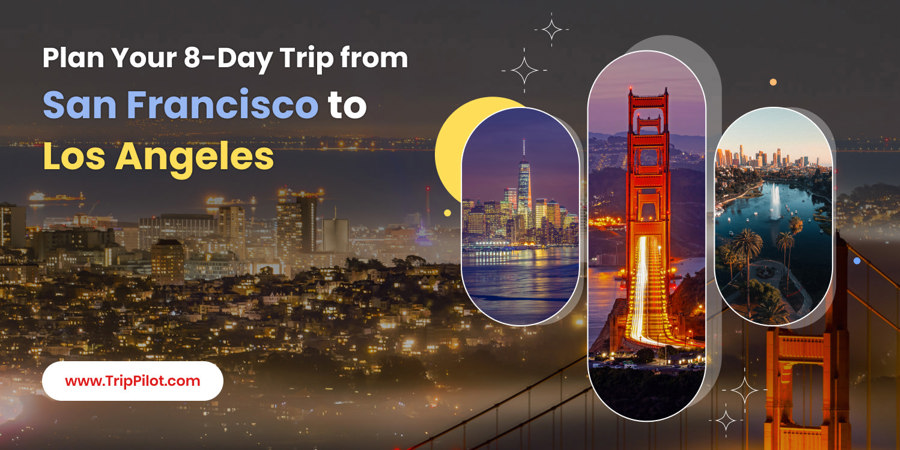Start your Tokyo adventure standing under the blazing neon lights of Shibuya Crossing, the roar of passers-by, and the scent of ramen drifting from corner stalls. Your senses are telling you: this is not just a city, it’s a living collage of past, present, art, technology, and you’ve got six days to unravel it. The challenge? Tokyo is massive, layered, and dazzling, but also disorienting if you don’t have a plan. That’s where TripPilot comes in, an AI-powered travel planner that turns overwhelm into clarity, lets you balance must-see landmarks with local gems, and optimizes your timing so you spend less time in transit and more time immersed in moments that matter.
Key Takeaways
- Experience a balanced Tokyo itinerary: iconic landmarks, street food, local neighborhoods, nightlife & nearby day-trips.
- Learn cultural insights & smart tips (when to visit shrines, norms, transport hacks) to travel like a local.
- Discover hidden gems off the tourist trail (Shimokitazawa, Yanaka, Odaiba at dusk).
- Save time & reduce decision fatigue using TripPilot’s AI planner: pre-built routes, scheduling, map-based suggestions.
- Budget & safety tips: get a Suica/PASMO card early, best times to avoid crowds, where to eat well without overspending
Table of Contents
- Day 1 – Arrival, Harajuku, & Shibuya Vibes.
- Day 2 – Shinjuku and Golden Gai
- Day 3 – Traditional Tokyo: Asakusa, Ueno & Akihabara.
- Day 4 – Ginza, Tsukiji & Odaiba Tech & Skyline.
- Day 5 – Hidden Neighborhoods & Culture: Yanaka, Shimokitazawa, Nakameguro.
- Day 6 – Day-Trip Outside Tokyo or Free Choice + Departure.
Your 6-Day Tokyo Itinerary
Here’s a daily itinerary that’s immersive, varied, and builds in rest & surprises. TripPilot helps you fine-tune each day based on your preferences (food vs art vs shopping), local events, and even weather, so you hit the sweet spots.
Day 1 – Arrival, Harajuku, & Shibuya Vibes
# Morning & Afternoon:
After you land, settle in (if you arrive early, leave your bags at your hotel or use coin lockers near a major station). Take it easy: head to Harajuku & Meiji Jingu Shrine. The shrine gives you a peaceful introduction to Tokyo’s Shinto heritage and forested torii gates. Walk through Yoyogi Park adjacent to it, especially calming if you arrive jet-lagged.
Then explore Takeshita Street for youthful, pop culture fashion, cakes, and boutiques. For lunch, try crepe stands or a local Udon shop.
# Evening:
Move toward Shibuya, starting with the Shibuya Scramble Crossing. Snap photos at the Hachiko statue. For sunset looks, head to Shibuya Sky (observation deck) for panoramic city views. Then dinner in Shibuya ramen, izakaya, or yakitori alley‐style.
With a custom Itinerary service, you will find nearby food places with excellent ratings, help you avoid peak dinner-rush places, and show you how to optimize your walking route so you minimize transit time.
Day 2 – Shinjuku and Golden Gai
# Morning & Afternoon:
Start in Shinjuku, the pulse of skyscrapers, neon, and gardens. Visit the Tokyo Metropolitan Government Building Observatory for free city views, then explore Shinjuku Gyoen if you're craving green space. For lunch, try a local soba shop or shabu-shabu.
Afterwards, head to Omoide Yokocho (old alleyways) or department stores in the streets around Shinjuku Station. If you like art, check out small galleries or even the Samurai Museum.
# Evening:
Golden Gai is ideal for late-night charm, tiny themed bars, and narrow lanes. Kabukichō offers vibrant neon nightlife. For dinner, pick an izakaya or yakiniku place; TripPilot can recommend options matching your budget and mood.
TripPilot, as your Personal Travel Planner, optimizes transport so you skip long station detours.
Day 3 – Traditional Tokyo: Asakusa, Ueno & Akihabara
# Morning:
Start in Asakusa: Senso-ji Temple with its Thunder Gate (Kaminarimon), stroll Nakamise Street for snacks & traditional gifts, maybe try some mochi or sweet dango.
# Afternoon:
Move on to Ueno Park & Ueno Museum district – Tokyo National Museum, art galleries, and if you like animals, Ueno Zoo. Lunch in this area has plenty of Japanese curry, tempura, or local noodle shops.
Later, head to Akihabara for electronics, anime/manga culture, quirky cafés (maid cafés, game shops). Evening: dinner here or head back toward Ginza: fine dining or sushi.
Use TripPilot’s Free Vacation Trip Planner tool to set budget filters for street food, curry shops, or sushi splurges.
Day 4 – Ginza, Tsukiji & Odaiba Tech & Skyline
# Morning:
Early visit to Tsukiji Outer Market: fresh sushi, seafood stalls, street snacks. Then walk through Ginza high-end shops, department store food basements (“depachika”), and stylish cafés.
# Afternoon:
Head to Odaiba in the afternoon. Enjoy the futuristic vibes: teamLab if still open (or check current exhibitions), the Digital Art installations, Rainbow Bridge views, and sunset over Tokyo Bay.
# Evening:
Relax at Odaiba’s seaside or head back to central Tokyo for dinner. TripPilot will help you see transit options and avoid wasted time.
When you create a travel itinerary online, TripPilot helps schedule exhibits and avoid ticket sell-outs.
Day 5 – Hidden Neighborhoods & Culture: Yanaka, Shimokitazawa, Nakameguro
Morning:
Visit Yanaka (the Yanesen area): it feels like old Tokyo, with narrow alleys, temples, artisan shops, and small cafés. It’s quiet, charming, less polished but deeply authentic.
Afternoon:
Go to Shimokitazawa for indie fashion, second-hand shops, live music venues, and a relaxed lunch in a café. Then proceed to Nakameguro if your timing aligns with cherry blossoms (spring) or autumn foliage the canal walk is gorgeous. Otherwise, cafés overlook the canal and local boutiques.
Evening:
Return for a more upscale dinner or explore local nightlife, depending on your energy, maybe rooftop bars in Roppongi or a mellow evening in Ebisu. TripPilot helps you pick options based on whether you want quiet or more hustle.
Travelers who want to build a custom trip can use TripPilot to swap neighborhoods or add foodie tours.
Day 6 – Day-Trip Outside Tokyo or Free Choice + Departure
# Option A – Day Trip:
- Kamakura: historic temples, Great Buddha (Daibutsu), beautiful seaside.
- Hakone: hot springs, views of Mt. Fuji, outdoor art museum.
- Nikko or Kawagoe: more traditional culture & nature.
# Option B – Deep-Dive in Tokyo:
If you have part of the day free, explore what you missed: maybe teamLab, Mori Art Museum, Tokyo Tower / Zojoji Temple, or revisit a favorite neighborhood.
Departure: Allow ample time for transit to the airport (Narita or Haneda), possible traffic, and final packing. TripPilot can map your travel from wherever you are to the airport, and tell you when to leave, taking into account train schedules.
Your AI Travel Planner will recommend departure times, train routes, and even hidden attractions nearby.
Cultural Insights & Local Travel Tips
- Respect in Shrines/Temples: Wash hands (temizu), bow, don’t take photos where prohibited. Dress modestly.
- Cash vs Card: Many small shops/traditional stalls accept only cash. ATMs by 7-Bank or Post Office are reliable for international cards.
- Transport Passes: Get a Suica or PASMO IC card early—useful for subways, trains, and even vending machines.
- Best Seasons to Visit: Spring (March–May) for sakura; Fall (Sept–Nov) for autumn colors. Summer is hot & humid; winter is cold but crisp & has fewer crowds.
- Language & Etiquette Basics: Learning basic Japanese greetings goes a long way. Speaking quietly in public, respecting queues, and removing shoes in certain indoor settings.
- Staying Connected: Reliable data helps—WiFi or eSIM; also TripPilot thrives if your device is online, so you can alter plans on the fly.
How TripPilot Enhances Your 6-Day Tokyo Experience
- Personalised itinerary crafting: Input your arrival time, budget-friendly travel interests (food, culture, art, shopping, outdoors), and TripPilot generates a day-by-day plan like above, customized to your preferences.
- Real-time optimization: Suggests alternate routes if museums are closed, the weather is bad, or an exhibit you want is sold out.
- Map + transit planning: Helps you pick the nearest station exits, minimize walking, and cluster neighborhoods per day.
- Restaurant & food stop recommendations: Based on your dietary preferences, price range, and trending local favorites, not just tourist traps.
- Alerts & reminders: For bookings, tickets (teamLab, observation decks, day-trips), and for when to leave to catch trains/airport to avoid last-minute stress.
Frequently Asked Questions
Is it easy to use public transport in Tokyo?
Yes. Tokyo’s train, subway, and bus systems are efficient, clean, and well-connected. Most station signs are in English. Key tricks: buy a Suica or PASMO card, know which lines serve your destinations, avoid peak travel times (morning 7-9 am, evening 5-7 pm). TripPilot can map your transit legs and show costs & times.
What is the best time of year to visit Tokyo?
The most recommended seasons are spring (March-May) for cherry blossoms and mild weather, and autumn (late September-November) for fall foliage and cooler, comfortable temperatures. Summer can be hot and humid; winter is cool with clearer skies but you'll need to layer.
Are there any day-trips you can do from Tokyo?
Absolutely. Some popular ones: Kamakura (temples, Big Buddha, beaches), Hakone (onsen, views of Mt. Fuji), Nikko or Kawagoe for historic shrines and “old town” vibes. Depends on how far you want to travel + how early you start. TripPilot helps you pick based on travel time and return times.
Do I need to learn Japanese or worry about language barriers?
No, you don’t need to be fluent. English signage is common, and many service staff understand basic English. But knowing simple phrases (hello, thank you, excuse me) shows respect and often opens doors to warmer interactions. Google Translate offline helps. Also, TripPilot can store custom phrase suggestions or include them in tip cards.
Is Tokyo expensive, and how can I manage my budget?
Tokyo can be expensive, especially for dining and luxury hotels. But there are many budget and mid-price options: street food, convenience store snacks, small local ramen shops, business hotels, capsule inns. Use lunch menus (often cheaper), kombini meals, and avoid peak surcharges. TripPilot can filter by budget and show cost-estimated itineraries.
Conclusion
Tokyo is a city of contrasts: neon and nature, tradition and innovation, ultra-modern towers and quiet temples. Explore Tokyo for six days, you’ll taste the sushi, walk through the gardens, lose yourself in youth culture, unwind in hidden alleys, and get outside the city for a breath of fresh air. With the right plan, you move from being just a visitor to someone who sees Tokyo’s many faces, one day at a time. TripPilot lets you skip decision fatigue, maximize your time, and tailor every experience to your style
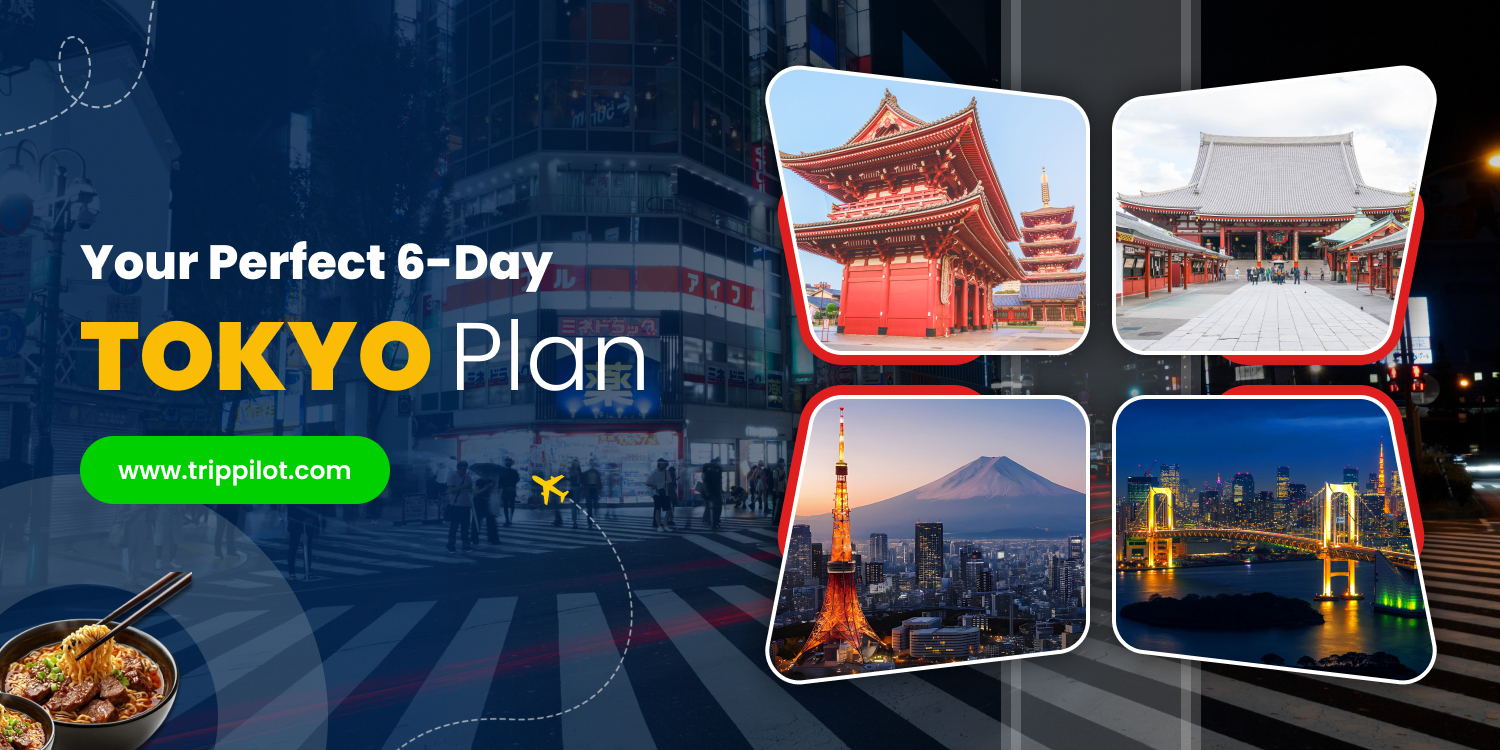





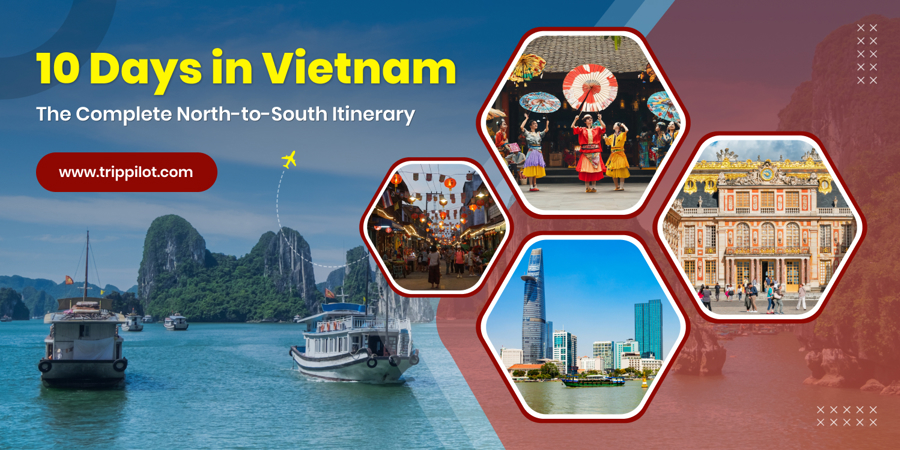
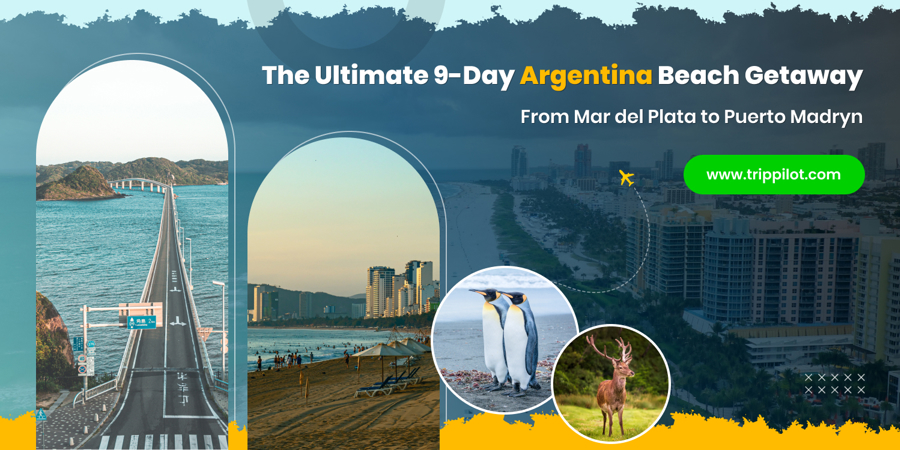
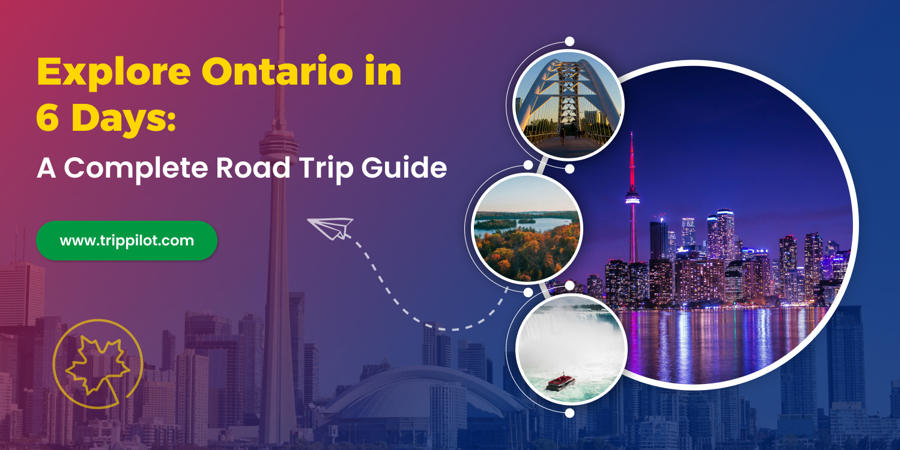

_900x450.jpg)


_900x450.jpg)
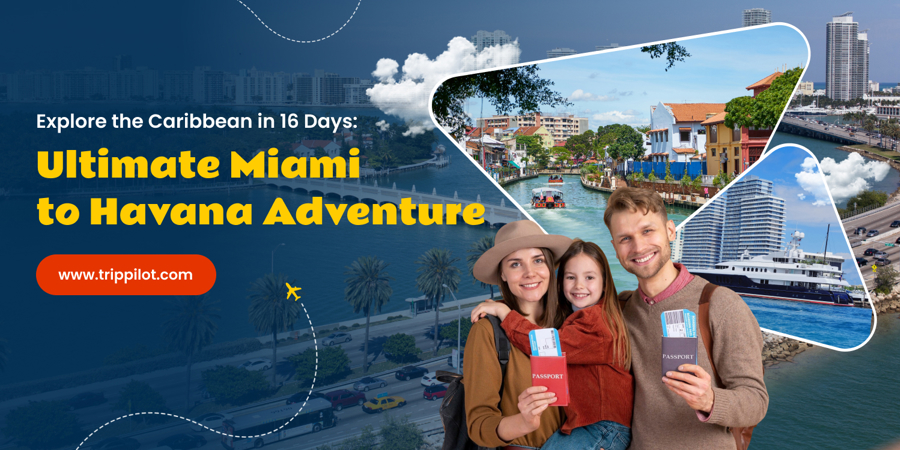
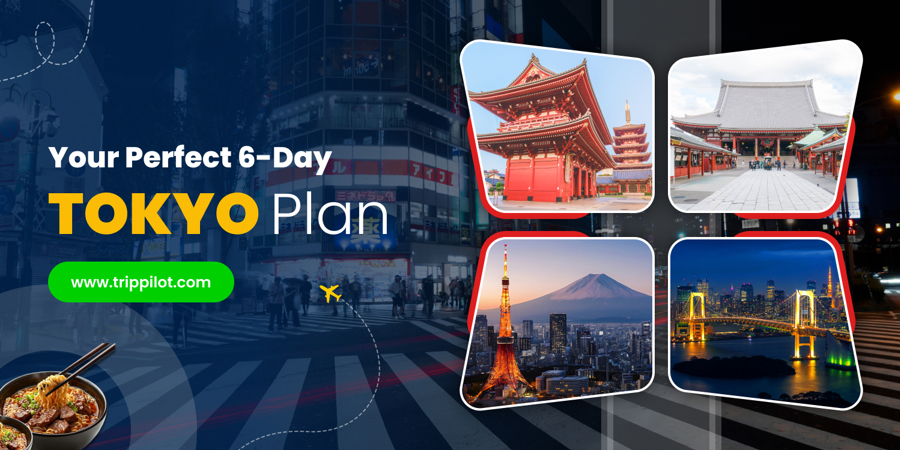
_900x450.jpg)
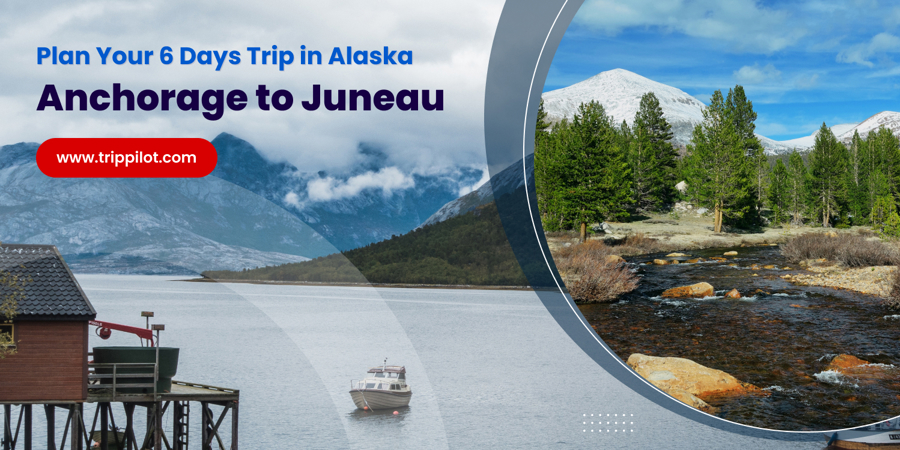
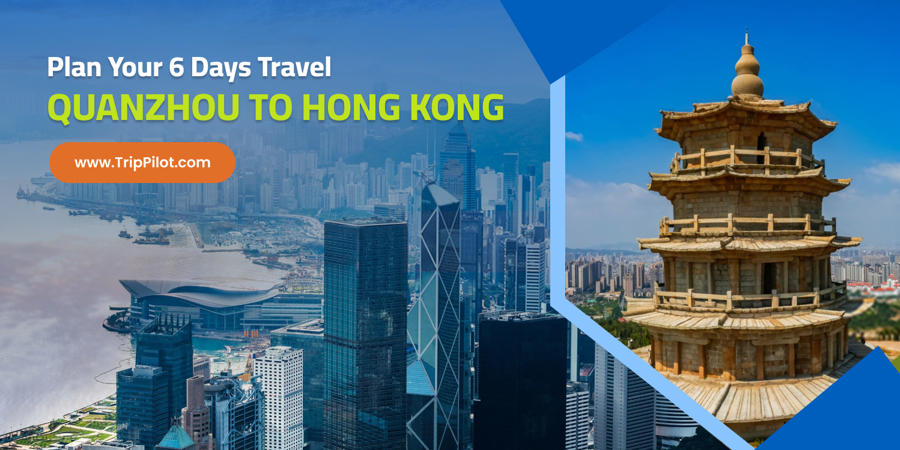


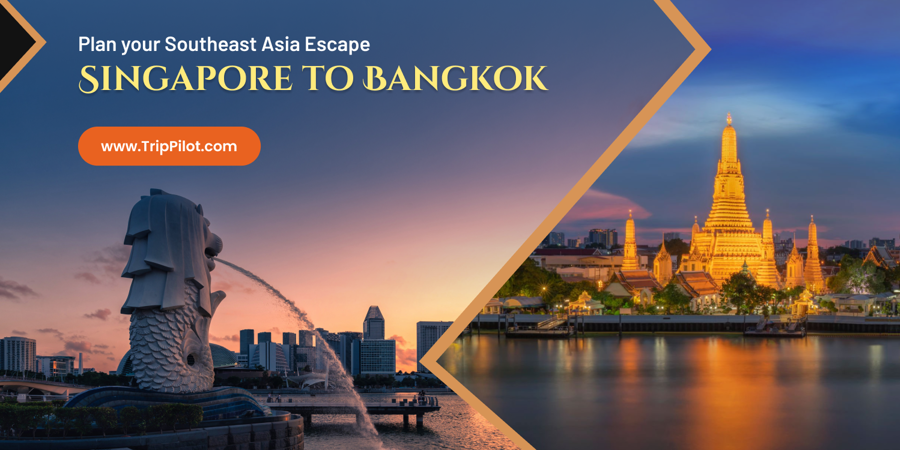
_900x450.png)



